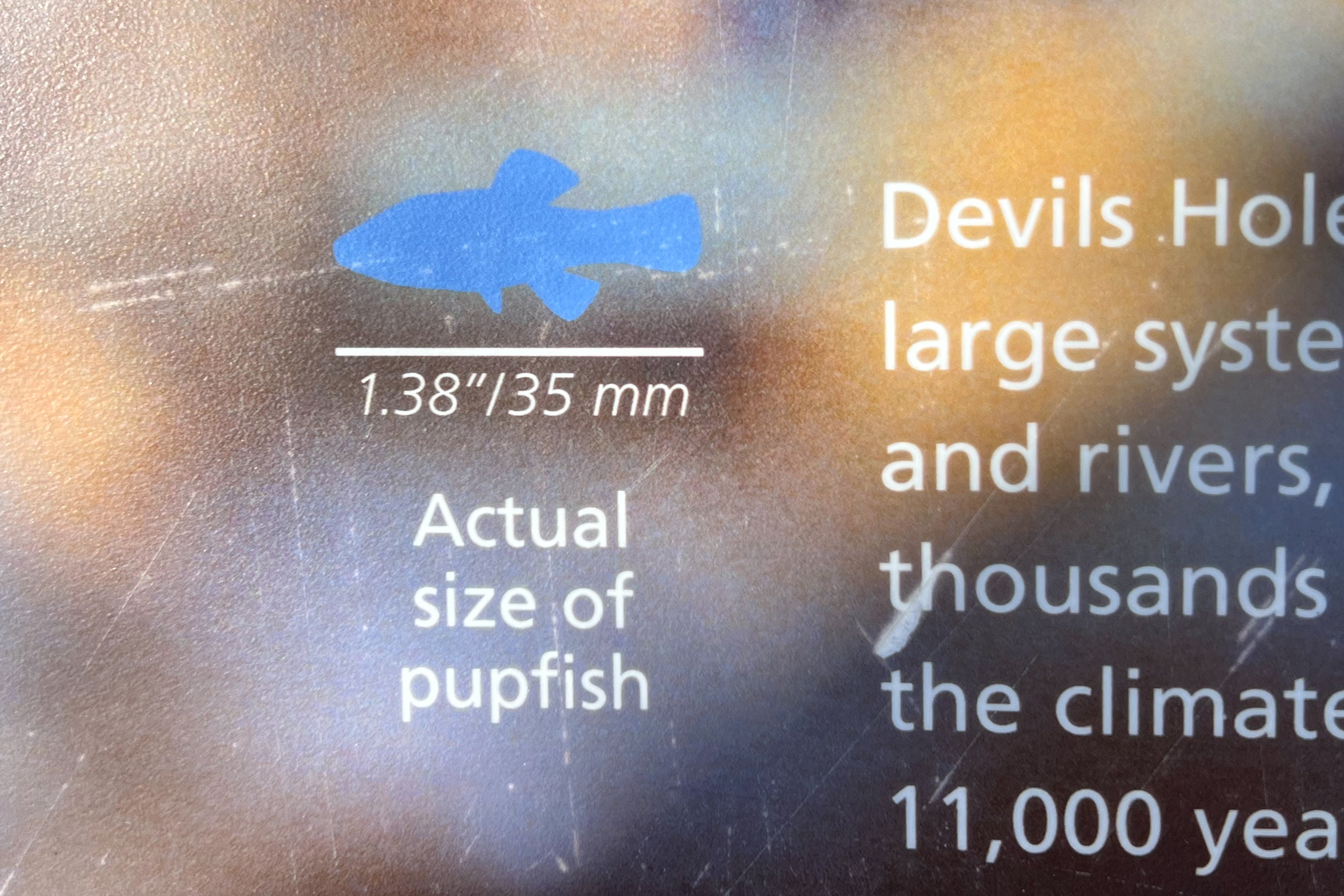
Our hike today was up Golden Canyon. We thought we were early, but on reaching the trailhead, the parking had overflowed to the shoulders of the highway. We had arrived just as a large ranger-led group was heading up the canyon. It didn’t take long to catch up, and then join them as the ranger explained the geology we were walking through.
Among the things we learned was the evolutionary history of a small fish that lived in the prehistoric lake ecosystem that had once thrived here. As the lake diminished to become multiple smaller isolated lakes, the fish evolved separately, resulting in distinct species. They are still found in remote locations in and around the park, and in fact can be seen at a wilderness preserve not far from here!
This fascinated Poldi, who had already read about the Ash Meadows National Wildlife Refuge and she immediately revised our plans for the day. We completed the hike to our “halfway point” up Golden Canyon (to the magnificent Red Cathedral), then hastily returned to the car and headed to Ash Meadows, a wildlife refuge just east of Death Valley.
We picnicked at the visitor center and hiked the boardwalk into the odd mix of wetlands and desert that harbor novel plants and animals, including the elusive pupfish, a small blue fish that you might expect to find in a tropical aquarium. We searched the small streams of water but did not see anything that seemed to qualify.
We did encounter a conservation worker however, in waders, tending a net across the flowing creek. He explained it was to catch sunfish and other invasive species that feed on pupfish. We also learned that people often “set their fish free”, when they tire of caring for their tropical aquariums. This is a bad idea; it just increases the competition for resources and even adds to the predators of native species.
Another bad idea had been the private development plans to build luxury housing and tourist facilities with all kinds of water features in this arid area. Such development would drain local aquifers and be an unsustainable burden on existing scant water resources. A side effect would be that the pupfish, who had managed to survive millions of years would be wiped out as their sanctuaries dried up. People reacting to this threat to the pupfish eventually succeeded in halting development (even after bulldozers had started work) and ultimately led to the formation of the Ash Meadows Refuge. This recent history was described in explanatory signboards at the visitor center and along the boardwalk.
The worker in the creek didn’t expect we would find any pupfish here, but he could assure us that we would see them at “Point of Rocks”, a few miles into the refuge.
And sure enough, the Point of Rocks boardwalk led us past a crystal blue pool in which we could see the endangered small blue fish darting around the algae-covered bottom. Pupfish! So named because their movements look like playful puppies, although they are really just doing pupfish things like eating and defending territory.
We had now seen the famous native fish that stopped a developer from turning this lush meadow into another city of casinos. Poldi can die happy now. (But not just yet; she has a few more items on her bucket list).
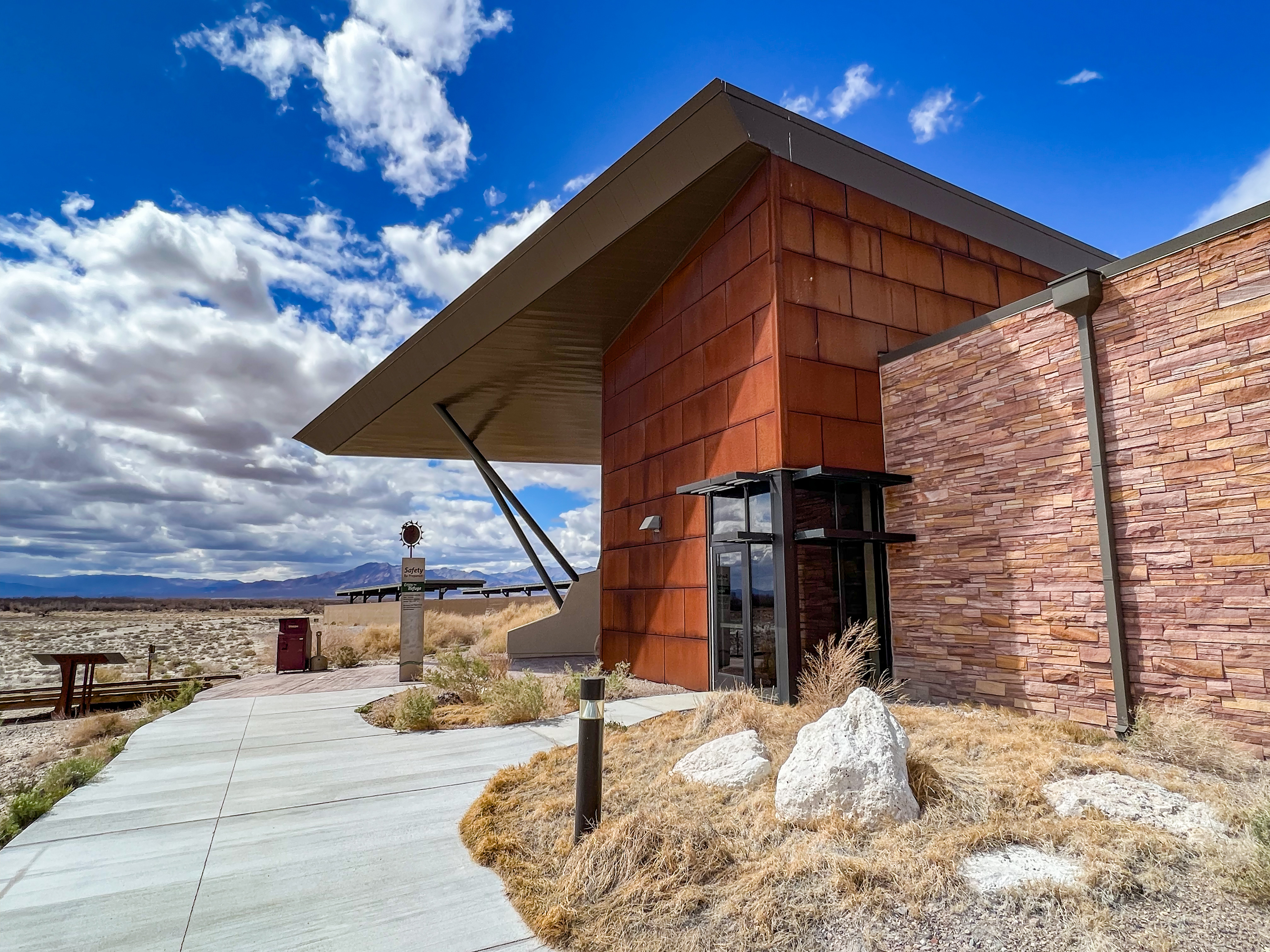
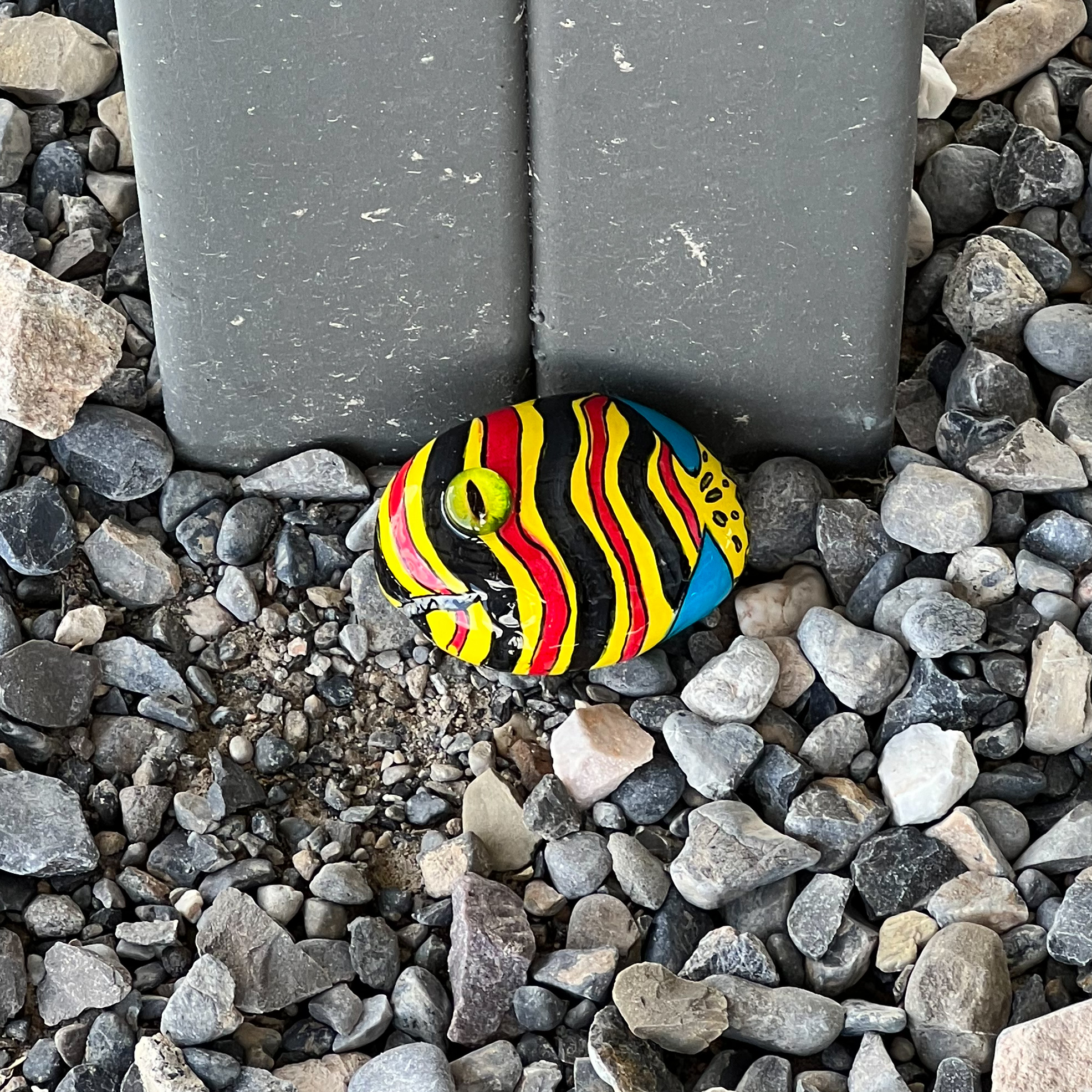
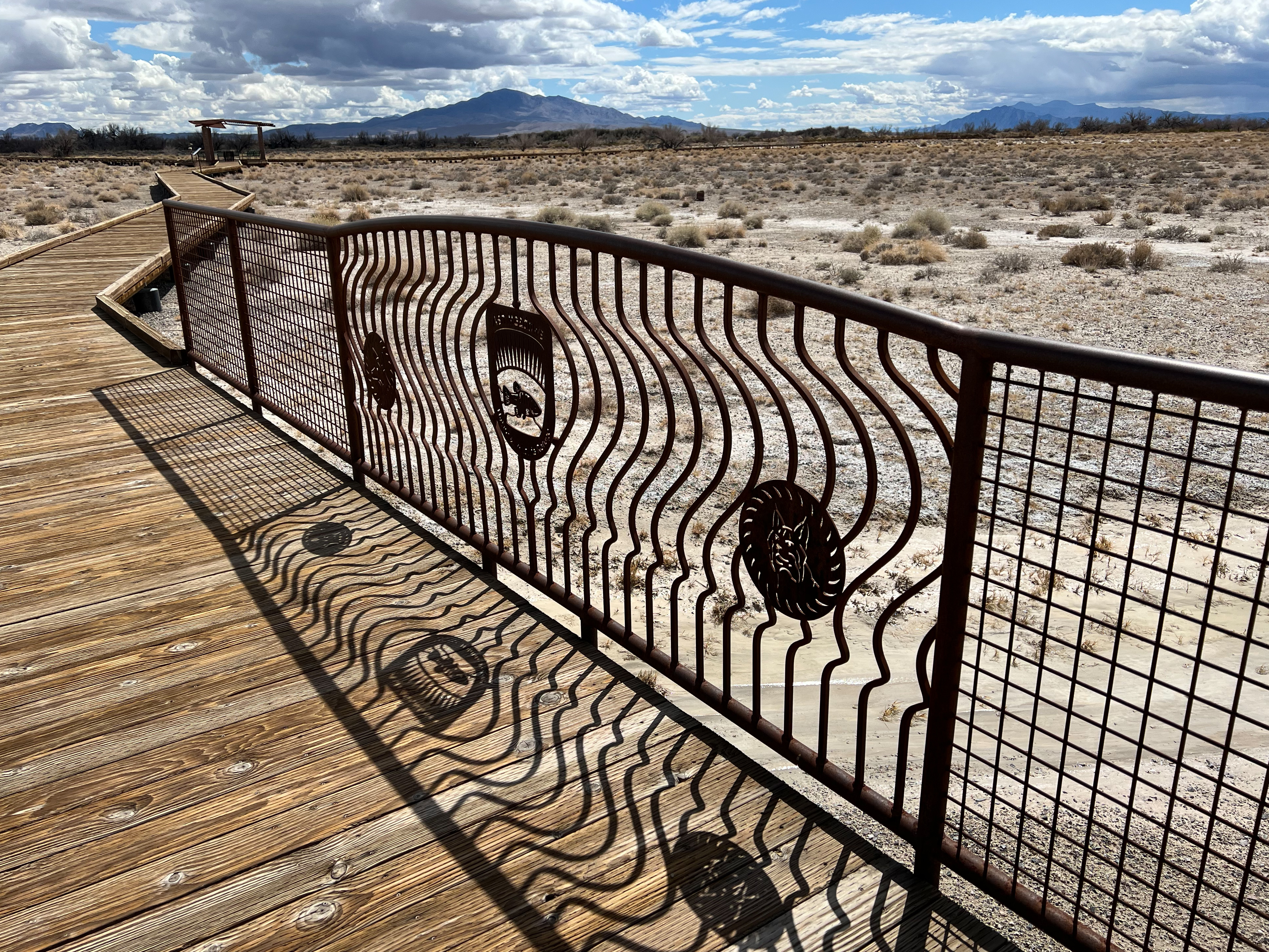
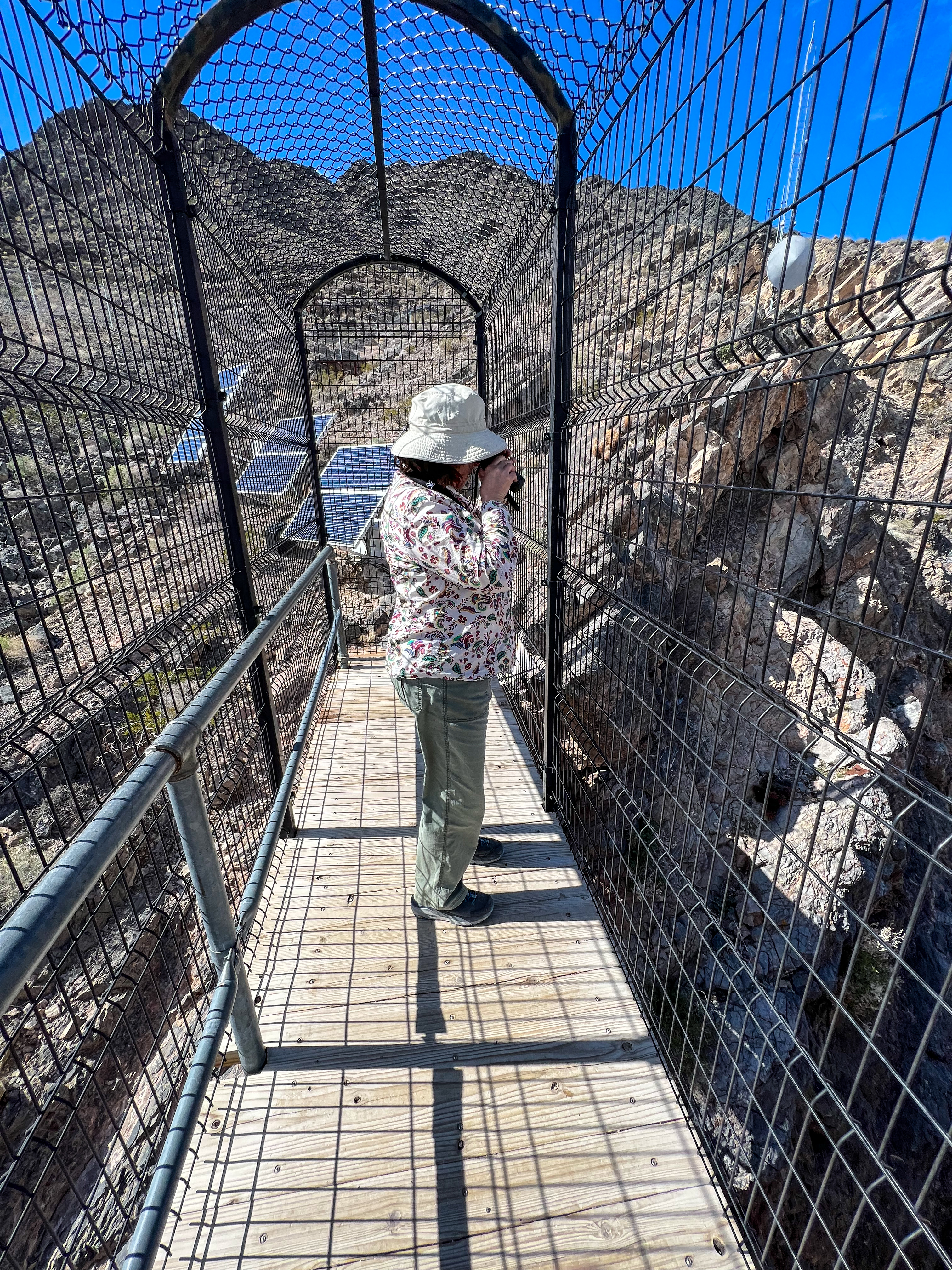
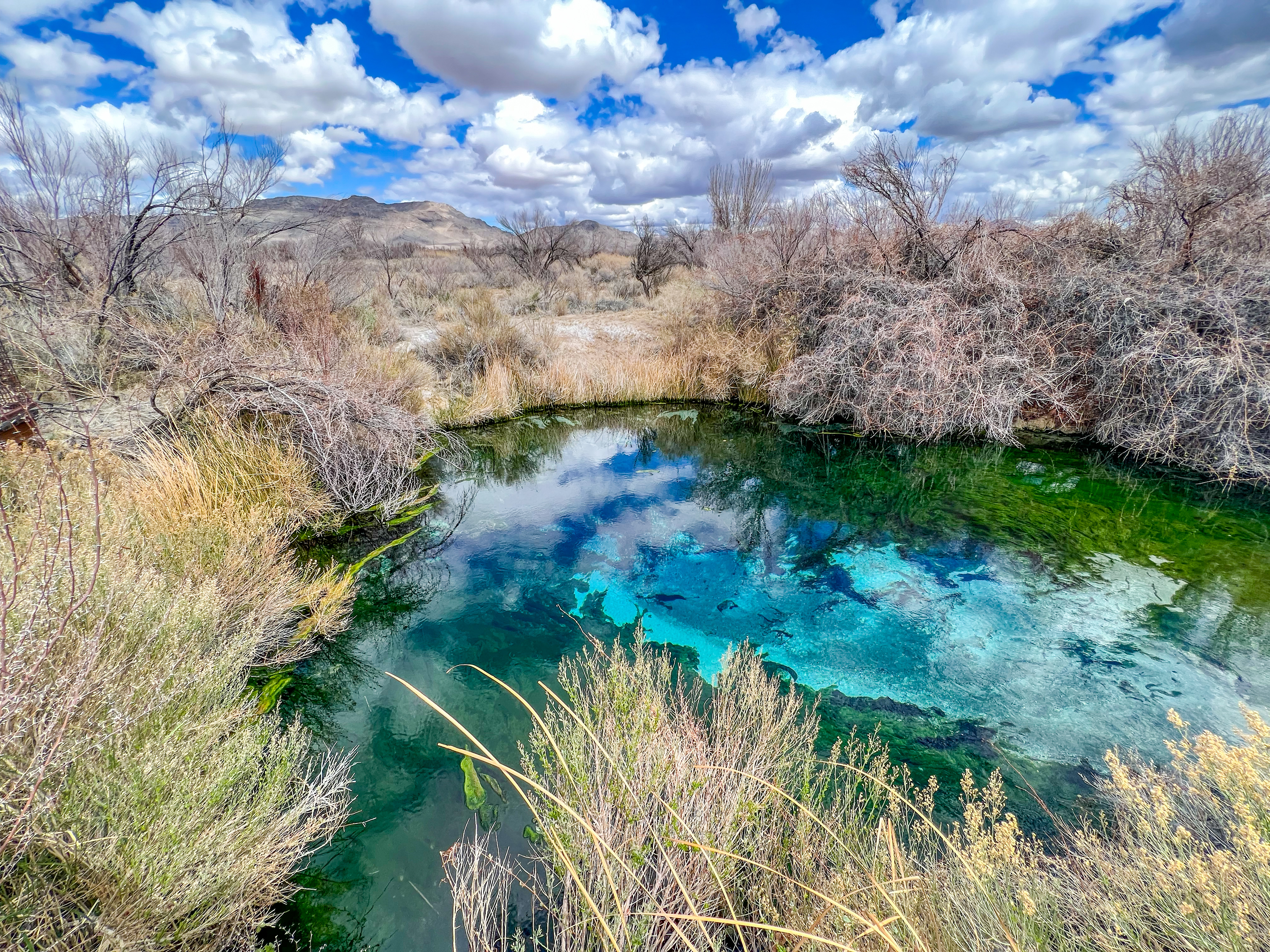
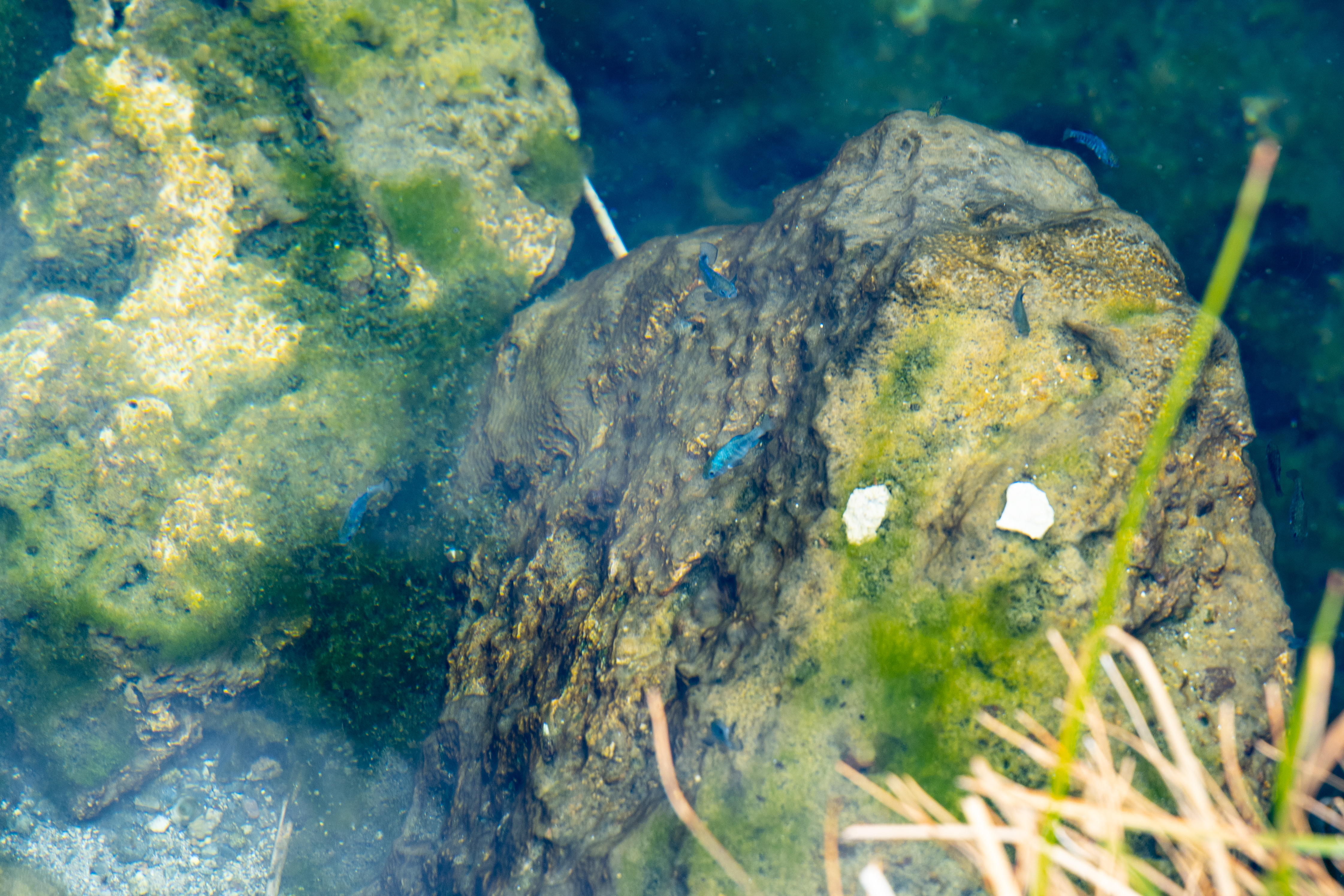

Pingback: “The Ranch at Death Valley”, Disneyfied | Thor's Life-Notes
I was lucky enough to live in the Ash Meadows area at a time before Devil’s Hole was all fenced and protected. It’s a mysterious spot, at the time no one knew just how deep it went. The random rainstorms (deluges?) that would occur would leave us finding another species of pupfish in puddles & the normally underground Amargosa river (you could tell where it was from vegetation growth only) would rise to the surface.
I loved living in Death Valley & Amargosa Valley back in the mid to late 70s. I’m glad you & Poldi found some of the magic there.
So nice to read your notes and relive those moments!
Pingback: Death Valley Finale | Thor's Life-Notes